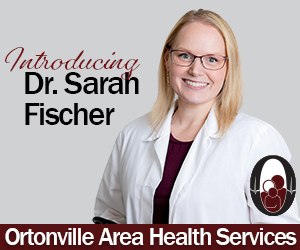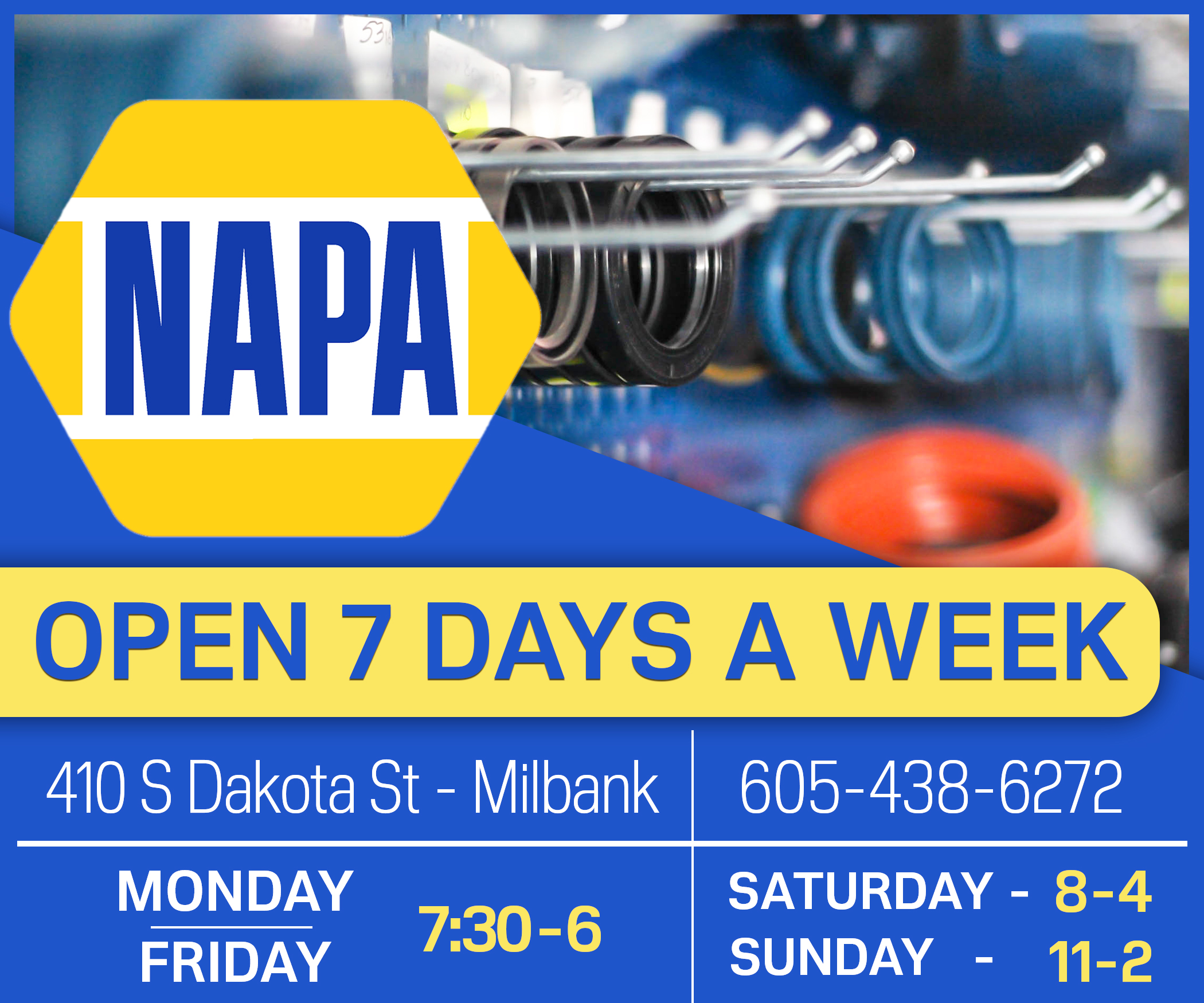
 Imagine cooking 1000 meals a day. Not sure you could? Sound overwhelming? Not for the Milbank School District cooks – they do it every school day.
Imagine cooking 1000 meals a day. Not sure you could? Sound overwhelming? Not for the Milbank School District cooks – they do it every school day.
Food Service Director Deb Underwood has been employed by the district for 26 years and has been in charge of producing school lunches for 13 years. Underwood says she can guess the lunch count each day almost to the exact number.
“Most people don’t realize the amount of food we go through to prepare these meals,” says Underwood. “We fry our own ground beef – as much as 200 pounds at a time. We try to make things from scratch as much as we can.”
 Underwood and her crew begin prepping and cooking meals by 7 a.m. each morning. The seven staff members at the high school building range from cooks and bakers to salad prep and dishwasher. Cookies and desserts are made from scratch, and about 50 percent of the bread they use is also baked in the school kitchen. Two cooks at Koch School complete about 40 percent of the elementary school’s cooking. “They make those things that don’t keep well for very long,” Underwood says. “The remainder of the food is delivered to the school from the high school kitchen.”
Underwood and her crew begin prepping and cooking meals by 7 a.m. each morning. The seven staff members at the high school building range from cooks and bakers to salad prep and dishwasher. Cookies and desserts are made from scratch, and about 50 percent of the bread they use is also baked in the school kitchen. Two cooks at Koch School complete about 40 percent of the elementary school’s cooking. “They make those things that don’t keep well for very long,” Underwood says. “The remainder of the food is delivered to the school from the high school kitchen.”
Underwood and her crew also prepare meals for the students and staff at St. Lawrence School. Gail Adelman, who has been employed by the Milbank district for 25 years, sets up and serves the meals at St. Lawrence.
“Guidelines have changed to incorporate more whole wheat and grains as well as more fruits and vegetables,” says Underwood. “We really have seen a shift in the kids likes. They are eating more of these things here at school, which is carrying over to their homes.”
Other traditional foods came under scrutiny when the former First Lady Michelle Obama implemented changes to school lunch programs. After President Trump took office, the restrictions were relaxed to allow more local flexibility for grains, salt, and fat content in milk. Underwood says she does not agree with the Trump administration allowance of 2% chocolate milk. She says, “I will only serve chocolate skim.” Milk options are white skim or 1% and chocolate skim.
 Middle school and high school students choose from two items daily along with the salad bar. Koch School students don’t have a choice of meals, but can opt to eat the salad bar. The fruit and vegetable bar is open to all students. “If the kids are still hungry, they can grab as much as they want off this bar,” Underwood says.
Middle school and high school students choose from two items daily along with the salad bar. Koch School students don’t have a choice of meals, but can opt to eat the salad bar. The fruit and vegetable bar is open to all students. “If the kids are still hungry, they can grab as much as they want off this bar,” Underwood says.
According to Underwood, a newer addition to the food department is the share table. Uneaten and unopened items such as a banana or milk are placed on the share table. Other students who are still hungry can eat that food. “We wash and rinse off items such as an uneaten apple, before putting it up for grabs,” Underwood says. “It helps cut down on waste. A lot of schools are going to this now.”
Underwood says “It’s fun to see the different ages of kids and how their tastes mature over the years. I’m on my second generation of kids now, so it’s fun to see them grow. There is never a day I dread going to work.”
High school kitchen staff: (Back) Gail Adelman, Cyndy Larson, Deb Underwood, and Julie Dwyer. (Front) Shelley Welberg, Shelley Smith, and Lisa Brown.
Koch School kitchen staff: (l. to r.) Josie Hanson and Becky Johanson. (Not available) Barb Kloster.













No comments so far.
Be first to leave comment below.